Know about the life, battles and achievements of Prataprao Gujar, Sarsenapati of Chhatrapati Shivaji Maharaj’s army.
Sarsenapati
Prataprao Gujar-The untold saga of Valor and Sacrifices of Gujar Family
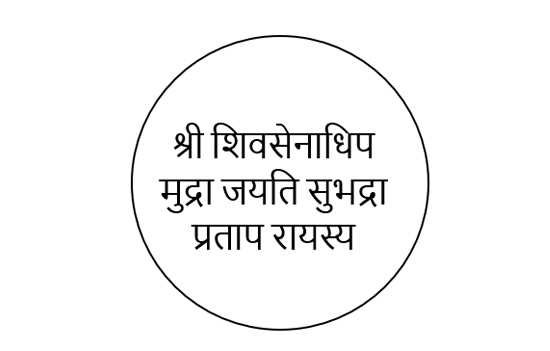 Official seal of Sarsenapati Prataprao Gujar. 1
Official seal of Sarsenapati Prataprao Gujar. 1
Translation: This is the seal of the Commander-in-Chief of Shivaji Maharaj’s forces; the victorious & glorious Pratap Rao.
Early Life
Unfortunately,
the early history of Prataprao was not clear as far as few documents are
available. He was born as Kudtoji Gujar around 1615 at Bhosare (40km east of
Satara, Maharashtra). A loan document from 1658 shows the name of one Khandoji
Raje Gujar as a witness. 2 It shows the
possible link between Kudtoji as he has named one of his sons Khanderao/
Khandoji, a tradition where a grandson was named after his deceased grandfather.
The rise of Kudtoji through the Maratha army is can be traced to early 1660’s when he was Sarnobat (chief) at Rajgad, the
first Maratha capital. Looking at this position which was very critical and was
given only to a trusted commander by Shivaji Maharaj, it can be concluded that
he has shown enough mettle to attain this position.
 The Gujar wada, the birthplace of Prataparao near Khatav Credit: Discover Maharashtra
The Gujar wada, the birthplace of Prataparao near Khatav Credit: Discover Maharashtra
Appointment as Commander-in-Chief
After the Treaty of Purandar, Shivaji Maharaj with 9,000 soldiers joined Mirza Raja Jai Singh to attack Adilshahi (Vijaypura, Karnataka). In January 1666, to divert the attention of Bijapur forces from main Mughal attack, Shivaji Maharaj tried to take Panhala Fort with two-pronged stealth attack at night. However, the unit under Netoji Palkar failed to reach and scale the fort in time and the attack failed. Due to this gross indiscipline, Netoji was suspended from the Commander-in-Chief’s post, and replaced by Kudtoji Gujar who was given the title ‘Prataprao’, which henceforth became his new name. 3
During Shivaji Maharaj’s visit to Agra, the administration of nascent Maratha Empire was handled, under the guidance of Rajmata Jijabai, by Moropant Pingale (Chief Minister) and Prataprao (Commander-in-chief). The duo handled this critical task very well, without ceding an inch to various enemies, and even capturing Rangna fort from Adilshah.
As a caretaker of Sambhaji Raje at
Aurangabad
After his escape from Aurangzeb’s captivity in August 1666, Shivaji Maharaj still offered an olive branch of peace as he needed time to plan the administrative reforms and rebuild military strength.
Thus, as a strategy Sambhaji Raje accepted rank of Panchhajari (5000 horse) along with the Mughal fief in Varhad. Out of this, 2500 soldiers under Prataprao were with Sambhaji Raje at Aurangabad (now Chhatrapati Sambhajinagar). The balance soldiers 2,500 were posted at his fief of Balapur under Rahuji Somnath. As there were no new military fronts open in Deccan due to the Mughal-Maratha truce, the Maratha force was never used in combat missions, and ‘the force was feeding themselves at the expense of the Mughal dominion’. 4 In these years, young Sambhaji Raje, Prataprao, and, Niraji made
a favorable impression not only on Prince Muazzam (second son of Aurangzeb) but
also on other Mughal nobles.
Aurangzeb
sent secret instructions to Prince Muazzam to capture Sambhaji Raje along with
Maratha commanders like Prataprao and send them to Delhi. If successful, this would
have been a crippling blow as Marathas would have lost a young prince and their
commander-in-chief in a single stroke.
However,
agents of Prince Muazzam at Delhi court conveyed the details of this
treacherous order to him in advance. Muazzam who was favorably predisposed
towards Marathas, tipped off Prataprao and Niraji, which helped them to escape,
with the army, to Rajgad in time. 5
Second sack of Surat
After
Aurangzeb broke the Treaty of Purandar, the Maratha blitzkrieg started in
February 1670. Many of the forts, which were lost to Mughals were retaken by
Maratha forces between February to July 1670, but the most sensational feat was
sacking of Surat for second time in October 1670. Prataprao Gujar was present
in the campaign and within three days Marathas received close to 66 lakhs. 6
Battle of Vani-Dindori
The
reports of sacking of the Surat were received by Prince Muazzam at Aurangabad.
He deputed Daud Khan to intercept the returning Maratha force. With an army of
20 thousand, Daud reached Chandwad, where at midnight his spies reported that
half of the Maratha army had already crossed pass of Kanchan-Manchan and were moving
towards Nashik while the other half is still picking up stragglers. Daud
started the chase at once but his forces were scattered in the dark and this
cost them dearly in war. 7
Maratha
spies had already reported the movement of Mughal troops and Shivaji Maharaj
had decided to send the loot onwards with 5,000 infantry and cavalry whereas he
and Prataprao would act as rearguard and take on the Mughal forces.
Ikhlas
Khan, who was commanding Mughal ‘harawal’ (Vanguard) reached near the pass
and saw Maratha army in the plains below, ready for battle. This was a shock to
Mughal troops who were expecting to chase and charge through Maratha rearguard.
Ikhlas made another mistake. Rather than wait for Daud Khan, or even giving
time to his soldiers to don armor (carried separately on camel-back) he charged
recklessly with a small force. This disturbed the whole battle plan.
By
the time Daud reached the battlefield, Ikhlas was severely wounded and unhorsed
while his troops were getting mauled by the Maratha forces. Daud was able to
recover Ikhlas with the help of artillery and musket fire but the battle raged on.
Despite lack of artillery, Prataprao’s force not only managed to hold the ground but also inflict a crushing defeat on Daud Khan.
As the primary task of obstructing Mughal forces was achieved, by evening,
Prataprao commenced his retreat which was skillfully covered by one last charge
on Daud Khan by around 1000 soldiers. By the time Daud Khan realized this sham
attack, the rearguard was also able to retreat.
After the battle, Daud marched to Nashik with his defeated army. Many of his captains like Ikhlas Khan, Sangram Khan, Mir Abdul Mabud (chief of divisional artillery), and one of Mabud’s sons were heavily wounded, while another son was killed. Mabud’s flag and horses were carried off by Maratha army. As per one record, more than three thousand Mughal soldiers were killed on that day while many more were severely wounded (date of Battle- 17th October 1670).
8
The
beating was so severe that Daud Khan was unable to make any move for next whole
month as many of the wounded soldiers had to be shifted to Aurangabad for
better treatment. 9
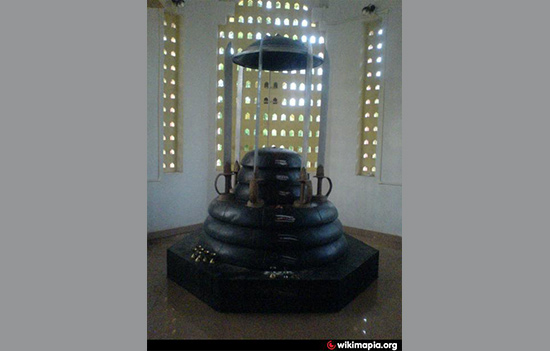 Memorial of Prataprao Gujar and six Maratha nobles at Nesari.
Memorial of Prataprao Gujar and six Maratha nobles at Nesari.
Further campaigns against the Mughal
forces
Next
Prataprao marched against Mughal-occupied Baglana and recovered forts like Ahivant
& Ramshej. Like lightning, he marched towards Burhanpur and before anyone came
out to defend, looted Bahadurpura, a suburb of Burhanpur. The attack on Bahadurpura
was a brilliant feint, as Mughal forces from Varhad were sent to defend the
impending Maratha attack on Burhanpur, while Marathas rapidly marched to
Karanja, a very wealthy city in Mughal-occupied Varhad.
From
Karnja, Pratap Rao was able to recover more than rupees one crore. More than 4
thousand pack animals were required to carry it off. The retreat was planned
expertly as Khan-i-Zaman, the Mughal governor of Varhad, was too slow and unable to locate the way Maratha forces were
retreating. Daud Khan had partially recovered from the defeat at Vani-Dindori
but he was also unable to intercept them. 10
The Maratha forces under Prataprao joined the main force under Shivaji Maharaj and Moropant Pingale (Peshwa) and the combined force attacked Salher, one of the most important forts in the Baglan region. Maratha spies had reported the movement of Daud Khan who started from Fardapur for Salher’s relief. Before Daud had time to intervene, Marathas tried to capture the fort fast by scaling the rope ladders. Fathullha Khan, the fort commander was killed in the charge and his brother-in-law handed over the fort to Marathas. When Daud marched from Mulher (56km north east of Salher), most of the army was scattered, lagging behind and those who reached Mulher were busy taking rest or cooking food for themselves instead of marching. 11
Aurangzeb
was dissatisfied with the performance of Mahabat Khan and his constant
bickering with Daud Khan and was forced to recall both from Deccan and instead sent
his foster brother Bahadur Khan and Diler Khan against the Marathas. They in
turn ordered Ikhlas Khan with around 40000 troops to recapture Salher, while they
went to raid the Maratha territory with flying columns. 12
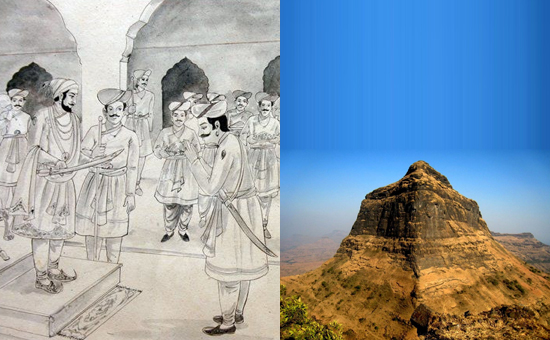 Salher Fort.
Salher Fort.
Battle of Salher
साही तनै सरजा खुमान सलहेरी पास कीन्हो कुरुखेत खिझी मीर अचलन सौं I
भूषण भनत बली करी है अरिन धर धरणी पै डारी नभ प्रान दै बलन सौं
II
अमर के नाम के बहाने गो अमरपूर चंदावत लरी सिवराज के दलन सौं I
कालिका प्रसाद के बहाने ते खवायो मही बाबु उमराव राव पसु के छलन सौं
II13
Translation: The forces of Raja Shivaji, valorous like a tiger, fought at Salher like a Kurukshetra war. The poet Bhushan says that the enemy (Mughals) forces at Salher were slaughtered like sacrificial sheep. Like his name, Amar Singh Chandavat went to Amarapur (swarga i.e., died) while fighting with the Raja Shivaji’s force. As we offer Kalika a sacrificial animal for her blessings, you (Shivaji Maharaj) have offered the heads of Mughal nobles to Bhudevi (mother-earth) for her blessings.
As soon as news of Salher’s Mughal siege reached Shivaji Maharaj, he sent Sarsenapati Prataprao and Moropant Peshwa for its relief. The battle of Salher in January 1672 was the largest and bloodiest confrontation between Mughal-Maratha forces to date.
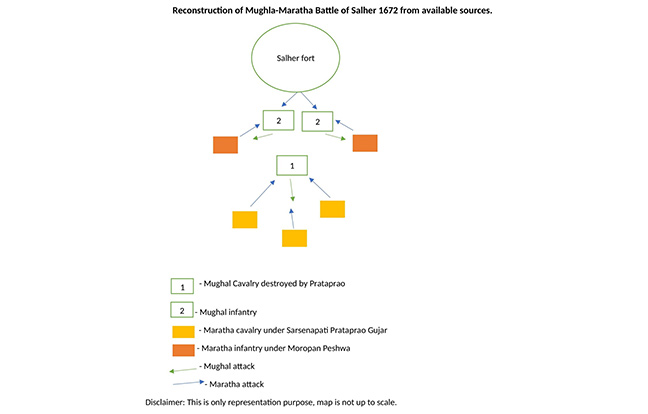 Battle of Salher
Battle of Salher
The
battle raged for over twelve hours. Mughal noble Rao Amar Singh Chandavat along
with 10,000 Mughal soldiers were killed. His son Muhkam Singh, Ikhlas Khan, and
22 Mughal nobles were severely wounded and became captives of the Maratha army.
The whole Mughal camp along with its treasure, 6,000 horses, and 125 elephants were
captured.
Both
Diler and Bahadur were coming to reinforce the Mughal army and had to beat a
hasty retreat due to this disaster. 14 An East India company letter from its Surat office to London confirms that Diler and Bahadur had to retreat ‘with shame & loss’. As the whole Baglana region is under control of the Marathas, Surat is under constant threat of the Maratha attack 15
Just
then a letter was received at Surat written by Prataprao demanding the Chauth
(25% of revenue) from the city and is an excellent example of a bluff to keep a
major Mughal financial center like Surat on tenterhooks. The full letter can be
read here. Click on PDF
Read about
the Battle of Salher
Author and historian Uday S Kulkarni wrote,
“In Delhi, the news of the defeat plunged Aurangzeb into despair. For three days he did not emerge for the pubic audience.”
Battle of Umrani
ततस्तैः पृष्ठतो दृष्टं वेष्टितं कटकं परैः
तावत्प्रतापराजौsसौ प्रताप इव मूर्तिमान॔
Translation:
They (Adilshahi forces) saw that their whole army was surrounded by the
Marathas and like his name, Pratapraj- the valor personified, personally led
the attack. (Parnalgrahan Akhyan by Jayram Pindye- Chapter 5, Shlok 60)
After the capture of Panhala in March 1673 from Adishahi through a daring raid by the Maratha forces, a clash with Adilshahi became eminent. Abdul Karim Bahlol Khan, a prominent noble of Adilshahi’s court, described as the second Afzal Khan, was deputed to check Maratha expansion.
Bahlol
marched with 12000 soldiers from Bijapur and pitched his camp at Umarani (25 km
south of Jath, Maharashtra). He was waiting for reinforcements from other
Bijapur nobles. Also, negotiations were planned with Diler Khan (Mughal) for
joint operations against the Marathas. Sensing gravity of the situation,
Shivaji Maharaj ordered Prataprao to strike immediately before any Bijapur or
Mughal reinforcements reached Bahlol.
To maintain the element of surprise, Prataprao covered 140kms in only two nights and reached near Umarani. After checking the battlefield, he realized that the lake at Umarani, the sole source of water for the whole Adilshahi force, was the weakest link. Prataprao finalized his battle plan quickly, Siddi Hilal and Vithoji Shinde to block the lake access, Krushnaji Bhaskar and Vitthal Pildev will block the right and left of the enemy while Visaji Ballal’s force will act as a flying column and cutting down anyone trying to run away from the blockade. The Maratha force swiftly and stealthily surrounded Adilshahi forces.
Unaware of these developments, Adilshahi’s army had exhausted water stored in the camp. Bahlol received news of the impending Maratha attack only when the mahouts were taking the elephants to lake for bathing around 8am and returned. By the time he marched to counter the Marathas, the advanced division under Prataprao had reached near the camp.
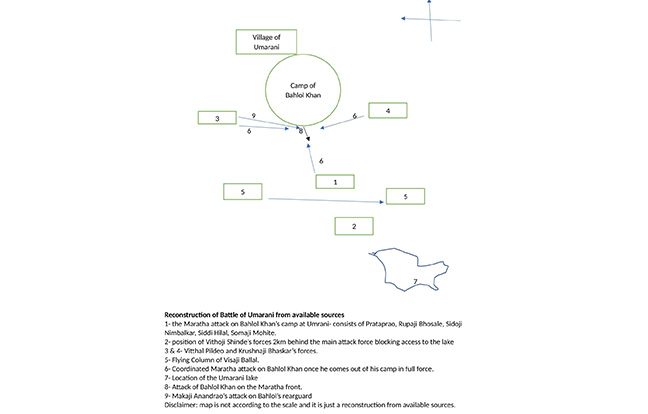 Battle of Umarani
Battle of Umarani
Bahlol realized the trap when he found out that not only was his forward movement blocked but moving to the flanks was also impossible as Vitthal Pildev and Krushnaji Bhaskar had now joined the attack. Similarly, his retreat was blocked by Makaji Anandrao. The battle raged for a whole day but by afternoon water scarcity in Bahlol’s camp started showing results. For more than ten hours his force was without water and the battle in such unequal terms would definitely end in further exhaustion of troops and total annihilation. When Bahlol received the news that his key lieutenant Siddi Barki was killed by Dipaji Rautrao, he saw no other option but to surrender.
At
this moment, Prataprao made a grave error of judgment. Instead of capturing
Bahlol with his nobles to ensure the elimination of the threat, Prataprao released him and gave him a safe passage only
on verbal assurance. 16 This
act was against policy, as the enemy nobles captured in war must be presented
in front of Shivaji Maharaj where according to their nuisance value, they were
either released or punished.
On hearing this news, Shivaji Maharaj got angry and shot a letter reprimanding Prataprao that why the latter had made such a truce against the policy. As events unfolded, Bahlol soon reneged on his promise and started attacking Maratha’s domain. This resulted in shooting off the second stern letter from Shivaji Maharaj to Prataprao that ‘unless you completely defeat/kill Bahlol, you are forbidden to show your face to me’. This reprimand was taken very personally by Prataprao. 17
Battle of Nesari
There are a couple of different versions of what exactly happened next. Some of the records state that Prataprao who felt cheated by Bahlol and enraged due to repeated reprimands of Shivaji Maharaj tried to attack Bahlol’s camp near Nesari (Kolhapur district) with only six nobles and was killed in the encounter (26 Feb 1674). 17
However, Naro Shenvi, the translator for English East India Company noted the following observation “Pertab Roy [Pratap Rao] who fell in the encounter of Sevajees army with Bollool Caun in a narrow passage betwixt two hills who with six horsemen more were slain, being not succored by the rest of the army” 18 which paints a completely different picture. It looks like Prataprao who with his key nobles went on reconnaissance mission before finalizing the battle plan and accidently stumbled upon advance units of Bahlol’s army which was of much superior strength and was killed in a resultant clash.
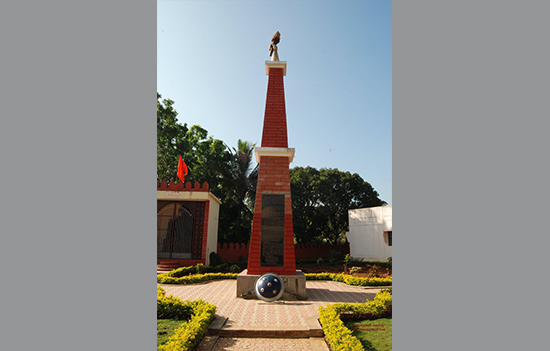 Prataprao Gujar memorial at Nesari. Credit wikimapia.org
Prataprao Gujar memorial at Nesari. Credit wikimapia.org
The sacrifice of Prataprao was immortalized via stories and ballads like ‘Seven’ from noted authors like V V Shirwadkar.
In the Battle of Nesari, along with Prataprao, Marathas lost six major nobles viz. Visaji Ballal, Vitthal Pildev, Krushnai Bhaskar, Siddi Hilal, Dipaji Rautrao and Vithoji Shinde. The sudden loss of C-in-C and almost whole command structure would have resulted in a disaster, but Hansaji Mohite, a junior commander of only 100 and Makaji Anandrao not only salvaged the situation but also defeated Bahlol Khan at the ‘Battle of Sampgaon’ (Karnataka). 18
Due to this extraordinary feat, Hansaji Mohite became new C-in-C of the Maratha army with the title of ‘Hambirrao’ in April 1674 i.e. before the coronation of Shivaji Maharaj as Chhatrapati.
Aftermath
Prataprao’s daughter Janakibai married Rajaram Maharaj (younger son of Chhatrapati Shivaji) in 1680. She committed Sati after the death of Chhatrapati Rajaram in 1700. 19
All
the sons of Prataprao contributed immensely during the 27 years of war between
Aurangzeb and the Maratha Empire.
Sidhoji Gujar, Prataprao’s elder son was a noble of the Maratha Empire. In 1689, when Santaji Ghorpade planned a daring raid on the camp of Aurangzeb, Sidhoji was the fort commander of Sinhgad where the Maratha army took refuge after the raid. Sidhoji was later appointed as Daryasarang
(Admiral) of the Maratha fleet. 20
Two
other sons of Pratprao named Jagannath and Khanderao were captured by Mughal
army after the 1689 siege of Raigad. When Aurangzeb was continuously
pressurizing young Shahu Raje for conversion, Khanderao
and Jagannath sacrificed themselves in his place. They converted to Islam in
July 1700 through Prince Bidar Bakht (Grandson of Aurangzeb) with new
names Abdur Rahim and Abdur Rahman. Shahu Raje never forgot the sacrifice made
by the Gujar family and when he became Chhatrapati, he gave Deshmukhi of 30
villages near Parali, Satara to them. 21
The
family of Sidhoji, who remained Hindu, was also treated kindly. Chhatrapati
Pratap Singh married his daughter Gojarabai to Raghunathrao Gujar, a descendant
of Prataprao. 22
Recently there are attempts to link Prataprao to Gujjar’s in northern part of India but according to the documents available, Gujar family is nowhere linked to them and is from 96 Kuli Kshatriya Marathas in origin. The confusion has been created by the phonetically similar-sounding surname of Prataprao Gujar.
If
anyone knows more about this subject or the Gujar family, please contact the
author via email. I will be happy to update this article further.
Sources
1. Laws and systems of Judicial
administration at the time of Shivaji- by B.V.
Bhat-Shivaji Nibandhavali-Vol 1-Pg 203, 1930.
2. Shiv Charitra Sahitya-Vol 3, Pg-185
3. K.A. Sabhasad, Sabhasad Bakhar, Ed:
S.N. Joshi, Pg 55, 1960.
4. ibid, Pg 56-58
5. ibid. Pg 59.
6. Aitihasik Farsi Sahitya-Vol 6, by
G.H. Khare, Pg 67, 1973.
7. Bhimsen Saxena, Tarikh-i-Dilkusha Tr:
Jadunath Sarkar, Ed: V.G. Khobrekar, Pg 70-71, 1972.
8. K.A. Sabhasad, Sabhasad Bakhar, Ed:
S.N. Joshi, Pg 61, 1960.
9. Bhimsen Saxena, Tarikh-i-Dilkusha Tr:
Jadunath Sarkar, Ed: V.G. Khobrekar, Pg 70-71, 1972.
10. Jadunath Sarkar, History of
Aurangzeb, Vol 4, Pg 220, 1930
11. ibid, Pg 221, & Aitihasik Farsi
Sahitya-Vol 6, by G.H. Khare, Pg 67, 1973
12. Jadunath Sarkar, History of
Aurangzeb, Vol 4, Pg 224, 1930
13. Kavi Bhushan, Shivraj Bhushan, Tr:
D.A. Tiwari, Pg 48, 1931
14. Jadunath Sarkar, History of
Aurangzeb, Vol 4, Pg 225-26, 1930 & K.A. Sabhasad, Sabhasad Bakhar, Ed:
S.N. Joshi, Pg 71-72, 1960.
15. English records on Shivaji Vol 1, Pg
217, 1931.
16. Jayram Pindye, Parnalagrahan
Akhyanam, Pg 32-44, & K.A. Sabhasad, Sabhasad Bakhar, Ed: S.N. Joshi, Pg
75, 1960
17. ibid, Pg 76
18. English records on Shivaji Vol 1, Pg
328-29, 1931 & K.A. Sabhasad, Sabhasad Bakhar, Ed: S.N. Joshi, Pg 75-76,
1960
19. ibid, Pg 106.
20. Kaka Vidhate, Santaji, Pg
21. Itihas Sangraha- November 1908, Old
Historical Legends Pg-3, & Mogal Darabarachi Batamipatre- Akhbar dt. 27 May
1700
22. Itihas Sangraha- November 1908, Old
Historical Legends Pg-5
To read all articles by author
To read all articles on Maratha History